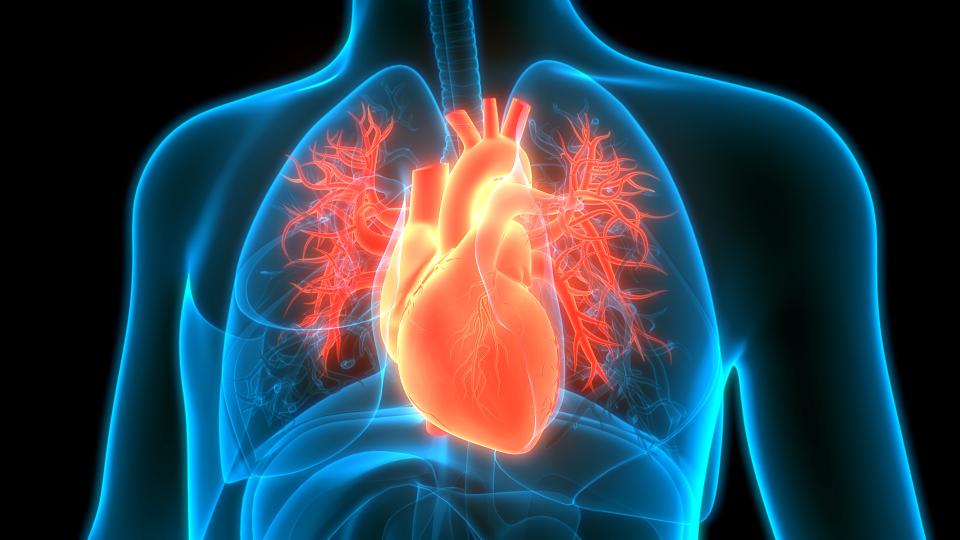What Is Coronary Artery Disease?
Coronary artery disease (CAD) is a type of heart disease that occurs when your coronary arteries don’t supply enough blood to your heart. CAD often develops because of a waxy substance buildup called plaque. When plaque builds up, it narrows or blocks your coronary arteries.
Types of Coronary Artery Disease
Cardiologists divide coronary artery disease into two types:
- Stable coronary artery disease—You have symptoms that worsen when you exert yourself and lessen when you rest. For example, you may have chest pain when you exercise but no symptoms at other times.
- Acute coronary syndrome—You have a sudden blockage of blood flow to the heart. For example, the plaque in coronary arteries may rupture or form a clot. This abrupt artery blockage is a heart attack and requires emergency medical treatment.
Coronary Artery Disease Symptoms
The classic early sign of coronary artery disease is chest pressure or pain in the center of your chest:
- Pain may also be accompanied by nausea and sweating.
- Pain may also increase with exertion and decrease with rest.
- Pain may spread to your neck and left arm.
It’s important to understand that not every patient has the same symptoms of CAD. Women may be more likely to experience other symptoms, such as abdominal pain.
What Does an Artery Blockage Feel Like?
A coronary artery blockage usually feels like pain or pressure in your chest. For many people, it feels like heartburn.
Why Choose University of Utah Health?
Our cardiologists develop and implement new techniques and treatments for coronary artery disease. We’ve been involved in multiple trials of novel devices and medications for CAD to continually bring patients new treatment options. We use sophisticated tools to accurately diagnose and treat all types of heart disease, including coronary artery disease. Our cardiologists are also experts in preventing CAD and managing complex diagnoses, such as a completely blocked artery (chronic total occlusion).
Find a Cardiovascular Specialist
Andrew E. Arai, MD, FAHA, MSCMR
CardiologyStavros G. Drakos, MD, PhD, FACC
CardiologySkyler Gerdes, AGACNP-BC, APRN, MSN
Cardiology
Coronary Artery Disease Risk Factors
You are more likely to develop coronary artery disease if you have the following risk factors:
- You've been diagnosed with these health condtions:
- Diabetes
- High blood pressure
- High cholesterol
- Diabetes
- You have a strong family history of coronary artery disease.
- Your age 50 or older.
- You eat a diet high in saturated fats and processed foods.
- You are physically inactive.
- You smoke tobacco.
Is Coronary Artery Disease Genetic?
Experts have not identified a specific gene responsible for coronary artery disease, but the condition can run in your family. You have an increased risk of developing CAD if your immediate family members have it.
Tests for Coronary Artery Disease Diagnosis
To diagnose coronary artery disease, your cardiologist will review your health history and ask you questions about your symptoms. Your cardiologist usually uses one or more of the following tests to get a better look at your coronary arteries:
- Computed tomography (CT) angiogram—This CT scan uses a contrast dye to see how blood flows through the arteries that go to your heart.
- CT with fractional flow reserve (CTFFR)—This combines a CT angiogram with a test that measures blood pressure drops to learn more about the extent of your artery blockages.
- Echocardiogram (echo)—This heart ultrasound assesses blood flow through your heart.
- Electrocardiogram (EKG)—This test evaluates your heart’s electrical activity.
- Exercise stress test —You will exercise on a treadmill while a cardiologist monitors your heart's activity.
Coronary Artery Disease Treatment
There are multiple stages of coronary artery disease. Our cardiologists use multiple tests to understand how severe the artery blockage is and determine the disease stage. This information helps us form a personalized treatment plan.
Coronary Artery Disease Medications
Your cardiologist may prescribe medications for the following reasons:
- To control your blood sugar
- To lower your blood pressure
- To lower your cholesterol
- To prevent chest pain
- To treat an irregular heartbeat
Coronary Artery Disease Diet & Lifestyle Changes
Patients with stable coronary artery disease start treatment by making lifestyle changes:
- Achieve and maintain a healthy weight.
- Eat plenty of fruits, vegetables, and whole grains.
- Exercise regularly.
- Limit your intake of alcohol, sodium, sugar, trans fats, and saturated fats.
- Manage stress with healthy coping tools.
- Quit smoking
CORONARY ARTERY DISEASE SURGERY & PROCEDURES
Your cardiologist may recommend one of the following procedures to treat advanced coronary artery disease:
- Percutaneous coronary intervention—Your cardiologist places a small mesh tube called a stent in your artery to open it and restore blood flow.
- Coronary artery bypass grafting (CABG)—Your cardiac surgeon uses grafts of an artery or vein from elsewhere in your body to create a new pathway for blood to flow around the blocked artery.
- Transmyocardial laser revascularization—Your cardiac surgeon uses a special laser to create tiny channels in your heart muscle to improve blood flow and reduce chest pain.
Some of these procedures are also performed through minimally invasive robotics. This technique uses small chest incisions and precise surgical tools that are controlled by a robot.
Can Coronary Artery Disease Be Reversed?
Coronary artery disease can’t always be reversed. But treatment can stop plaque progression and prevent heart attacks.
Coronary Artery Disease Life Expectancy
Multiple factors affect whether coronary artery disease impacts your life expectancy. It is a condition that can lead to premature death, especially if it’s not managed. But with treatment, most people can manage coronary artery disease successfully and live for many years.
Make an Appointment With Our Cardiologists
You don’t need a referral to make an appointment with our cardiologists. Call us at 801-585-7676 to make an appointment.
To refer a patient to our cardiology team, fill out our referral form or call 801-581-2897. Please fax applicable records to 801-587-7290.
Heart Patient Resources
When to See a Cardiologist
How severe should your heart symptoms be before you see a heart specialist (cardiologist)? How can you tell if someone you love should see a cardiologist?
What to Expect at Your Cardiology Appointment
It’s important to get timely care when you need to see a heart specialist. University of Utah Health’s care team model means you’ll see the right specialist tailored to your individual needs and immediate concerns. All members of our care team work in collaboration with your cardiologist to provide you with high-quality, compassionate care at the time you need it.

Visiting & Staying at the Hospital
Are you visiting or staying at University of Utah Hospital for your medical care? Get all the info you need for your visit—including how to get here, where to stay, where to eat, and more.
Can Coronary Heart Disease Be Cured?
Coronary heart disease can be managed in a number of ways. Dr. Tom Miller and cardiologist Dr. James Fang sit down to discuss some simple things you can do to effectively manage your coronary disease, and even try to prevent yourself from getting it in the first place.









